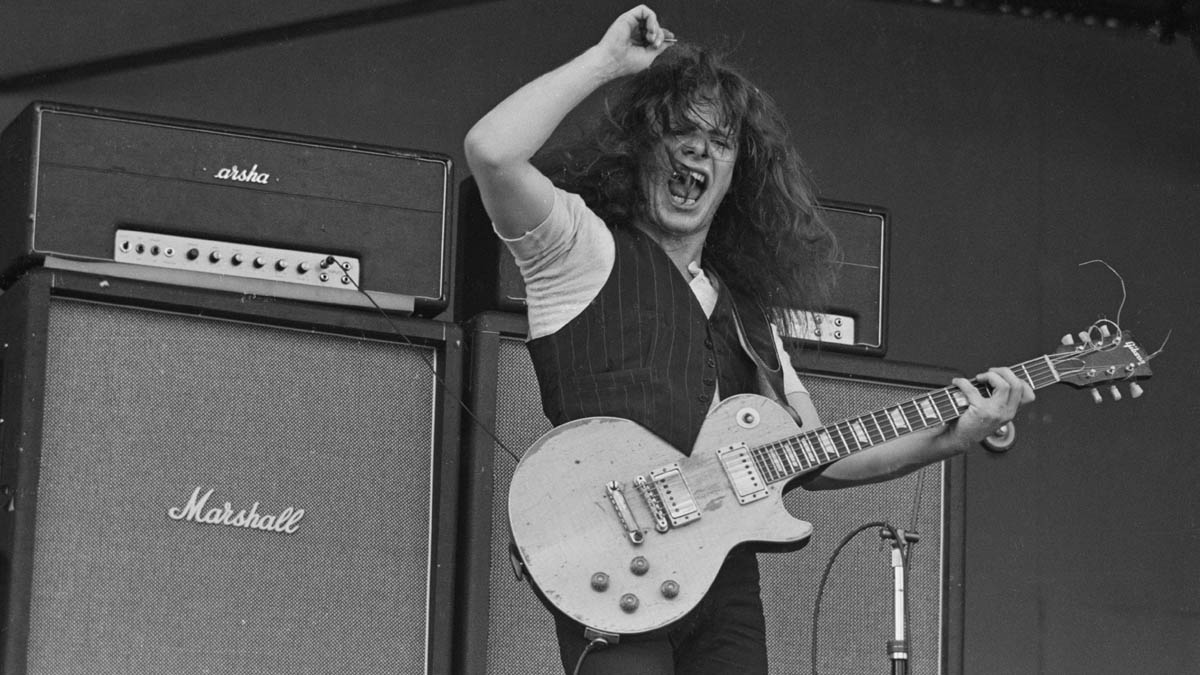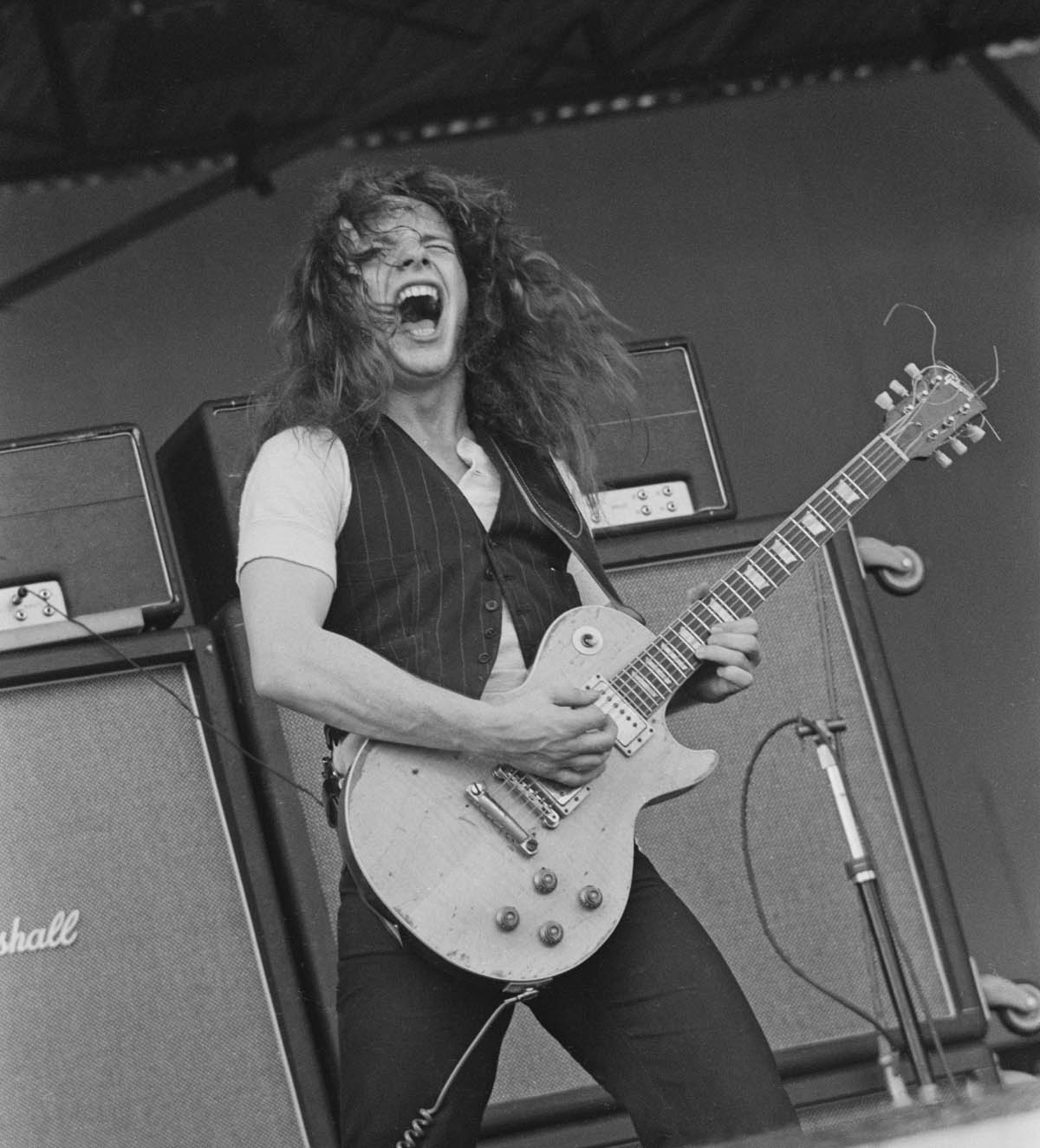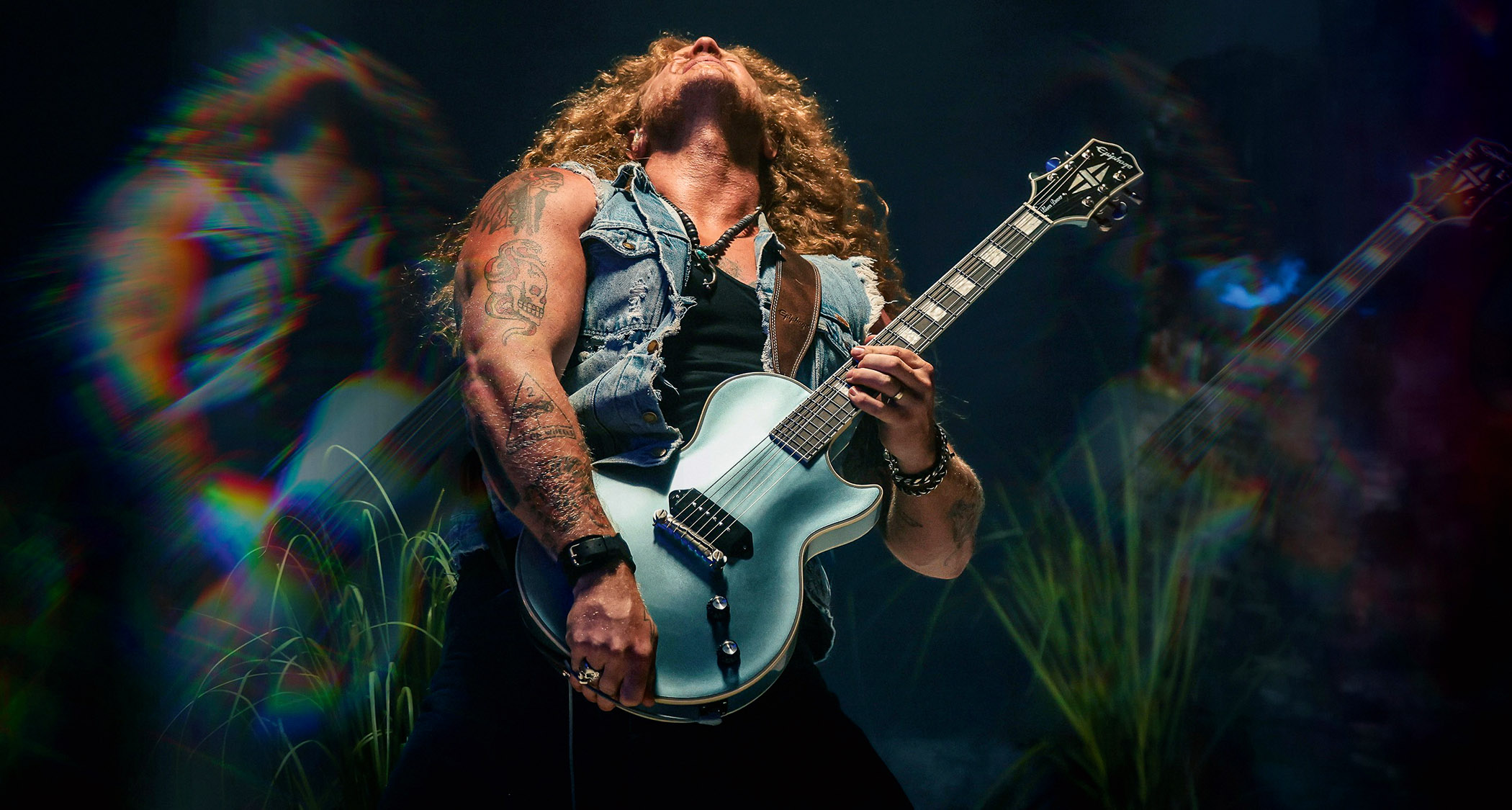The story of Paul Kossoff's 'Stripped Top' 1959 Gibson Les Paul Standard
The life and times of the guitar used to cut Free's legendary All Right Now

Few guitarists have the power to snatch a show out of the gutter and fling it into the heavens, but Free’s guitarist was one of them: “I saw Kossoff pull a gig up out of the toilet one night,” recalls Whitesnake veteran Bernie Marsden.
“They were really not doing very well and Kossoff kind of looked across the stage and gave [drummer] Simon Kirke the nod. He counted into All Right Now and, of course, the place just went nuts. The gig was rescued completely.”
Famed yet fated, Kossoff’s star rocketed high, flared bright then tumbled to Earth, spent, in just eight years. He played his first gigs with Free in 1968, at the age of just 17. He cut his first album with the band, Tons Of Sobs, the following year and a second, eponymous long-player followed in October 1969.
Despite their musical strengths, the first two albums garnered only lukewarm sales – but the band then hit the bullseye with their third long-player, Fire And Water, released 26 June 1970.
Back then there was nobody who was doing that slow vibrato. I think Kossoff said he listened to what Clapton was doing with Cream and slowed it down
Bernie Marsden
Fire And Water broke Free around the world, reaching No 2 in the charts in Britain, its popularity driven by All Right Now: a single of almost throwaway simplicity that was elevated to greatness by Kossoff’s languid yet edgy playing and Paul Rodgers’ charismatic vocal.
A hit at the time, All Right Now now stands as one of the great guitar tracks of any era. Written in the space of a few minutes by bassist Andy Fraser after a disastrous gig, possibly in Manchester, the song was intended to be the triumphant closing number the band was crying out for.
Kossoff’s urgent riff and expressive vibrato were part of the magic that propelled the song to No 2 in the British charts and No 4 in the Billboard Hot 100 in the States. Familiar now, Kossoff’s playing style was strikingly original in 1970, Bernie Marsden recalls.
All the latest guitar news, interviews, lessons, reviews, deals and more, direct to your inbox!
“Everybody talks about it, but go back 40-odd years and it was outrageously different. A lot of people have put it into their playing now because of him, but back then there was nobody who was doing that slow vibrato. I think Kossoff said he listened to what Clapton was doing with Cream and slowed it down.”
I’m as certain as I can be that the stripped ’Burst is actually the All Right Now guitar
Steve Clarke, author of Famous Frets
It wasn’t the only thing Kossoff had in common with Clapton – he also shared his love of late-50s Les Pauls, which were slowly becoming recognised as classics by clued-in players. Kossoff owned and played several ’Bursts during the short years of his life.
One of the best-known is the 1958 ‘Darkburst’ that he acquired from Clapton during Blind Faith’s ill-fated 1969 tour, with Kossoff reportedly swapping a 1957 Les Paul Custom for the ’58. According to some accounts, the Custom later passed into Albert Lee’s ownership.
Given the Darkburst’s high-profile associations, many have assumed it was the guitar that Koss used to cut All Right Now. However, leading authorities on Kossoff’s music and guitars believe that honour probably belongs to another guitar – a 1959 Les Paul Standard with a stripped top that Kossoff acquired in obscure circumstances in spring of 1969.

Steve Clarke authenticates vintage guitars for Bonham’s auction house and is also the author of the book Famous Frets, in which he traces in forensic detail the fate of some of rock’s most celebrated guitars, from Marc Bolan’s Les Paul to Pete Towshend’s Strats.
Steve is a seasoned tech and guitar restoration expert and also has the distinction of being the only tech permitted to maintain Kossoff’s ‘Stripped Top’ 1959 Les Paul, which today belongs to an anonymous private collector.
“I’m as certain as I can be that the stripped ’Burst is actually the All Right Now guitar,” Steve says. “The first picture of Koss with that guitar that exists was taken on 6 or 7 April 1969,” he explains, referring to images of Kossoff playing live at the Golf-Drouot club in Paris.
“After that you can find photographs of him using the ‘Stripped Top’ ’Burst at Morgan Studios in May, plugged into a wah pedal that he was using for the track he was recording at the time,” Steve continues.
There were three main Sunburst Les Pauls that Kossoff used: the Clapton one, the stripped-top one and a ’59 ’Burst that he acquired slightly later that went on to be owned by Arthur Ramm
David Clayton, Free Appreciation Society
These were the sessions for Free’s self-titled second album and the presence of the wah suggests the track being waxed was either Sugar For Mr Morrison or I’ll Be Creepin’.
When Fire And Water leapt into the Top 10 the following year, it was the ‘Stripped Top’ ’Burst that Kossoff used to play All Right Now on the BBC’s flagship music show, miming self-consciously before a studio crowd.
“He used the ‘Stripped Top’ ’Burst on Top Of The Pops in June 1970,” Steve says. “Then, again, at the Isle of Wight festival on 30 August that year, with half a million people watching, it’s also the stripped ’Burst he’s using. It was his favourite guitar without a doubt.”
David Clayton of the Free Appreciation Society is an exhaustive historian of the band’s career who has also overseen remasters of Free’s back catalogue. He concurs that the ‘Stripped Top’ ’Burst was likely the guitar used to record All Right Now.
“There were three main Sunburst Les Pauls that Kossoff used: the Clapton one, the stripped-top one and a ’59 ’Burst that he acquired slightly later that went on to be owned by Arthur Ramm,” David explains.
“Kossoff used the stripped one for All Right Now at the BBC in June and Clapton’s one for the Granada TV show on 24 July 1970. So he was basically relying on those two guitars before Arthur’s turned up,” David says.
I’ve played all three – and the thing with the ‘Stripped Top’ ’Burst is that it’s a really bright, fierce guitar
David Clayton, Free Appreciation Society
On the question of whether the ‘Stripped Top’ ’Burst was the guitar used to record All Right Now, David says that the absence of documentary evidence from the sessions means there can be no absolute certainties – but Kossoff’s use of the guitar for the band’s performance of that track on Top Of The Pops, plus his frequent, documented use of the guitar for high-profile shows around that period, is indicative.
“Ultimately, it’s all guesswork but my thoughts have always been that it was that guitar,” David says, adding that the voice of the ‘Stripped Top’ ’Burst is brighter and more resonant than that of the ex-Clapton ’58, which lends further weight to the idea that it was the instrument Koss used for All Right Now’s edgy, energised riff.
“I’ve played all three – and the thing with the ‘Stripped Top’ ’Burst is that it’s a really bright, fierce guitar,” David recalls. “It’s got a really lovely ring. If you play a nice big chord, the whole guitar just sings. That’s maybe because the finish is stripped away. I don’t think it had any finish on the top at all when Paul had it, so I’m assuming it was particularly resonant.”
One detail that has remained elusive to latter-day Kossoff historians is how the ‘Stripped Top’ ’Burst was obtained. “Where he got it from, I really couldn’t say,” David Clayton admits. “Musicians were continually swapping guitars and they weren’t considered particularly great relics at that point. They were just tools, really.
“So whether Paul traded something for it or whether he bought the guitar isn’t known. My guess would be that he traded something for it, because at that point in time [prior to the success of Fire And Water] he wouldn’t have had a lot of money.”
In the latter part of his life, you know, you didn’t know what you were going to get when you went to a gig. I saw him lean back on his amp one night when his amp wasn’t there
Bernie Marsden
The next chapter in the story of the ‘Stripped Top’ ’Burst is less happy. Free’s follow-up to Fire And Water, entitled Highway, was released in December 1970 but fell far short of the latter’s success – its washed-out cover art hinting at its more introspective style, which failed to connect with the fickle record market of the time.
Internal division led to the band’s split in 1971, and though they subsequently reformed to record a further two albums, plus a huge hit single in Wishing Well, the band were never quite the same as Kossoff sank further into a quagmire of drug dependence – with his increasingly erratic performances prompting Andy Fraser’s departure in 1972.
His addiction to the sedative Mandrax was particularly damaging to Kossoff’s health and music. “In the latter part of his life, you know, you didn’t know what you were going to get when you went to a gig,” Bernie Marsden recalls. “I saw him lean back on his amp one night when his amp wasn’t there. I think that was in Wellingborough.”

Sadly, Kossoff’s increasing dependence on drugs saw him part with some of his most cherished instruments in order to feed the habit, which is how the ‘Stripped Top’ ’Burst passed into the ownership of fellow musician Mike Gooch in 1974.
“At the time was Paul was pretty much being starved of money [by his closest associates] to keep him off drugs,” David Clayton says. “So if he was feeling particularly desperate, he would just take a guitar down to Orange and sell it and then go find a dealer, basically. His dad tried to stop that a couple of times and at some point when Paul was sober again he’d ring up and tell his dad what he’d done and David [Kossoff] would have to go in and rescue the guitar.”
These last-minute rescues didn’t always work, however, and in this instance Gooch bought the ‘Stripped Top’ ’Burst for £500 in September 1974, before it could be retrieved by Kossoff’s father.
“I would assume that Mike had got there as the guitar was just going into the shop but before David knew Paul had sold it again. That did happen quite a lot,” David Clayton says.
Ironically, Gooch’s father upbraided him for buying a tatty guitar for so much money and Gooch subsequently had the guitar refinished by renowned luthier Dick Knight in 1975, adding the gold hardware that can still be found on the guitar today.
Poignantly, Kossoff later tried to buy the ’Burst back from Gooch when the latter took the guitar down to one of Kossoff’s post-Free gigs with Back Street Crawler at Fairfield Halls in Croydon on 15 June 1975. Kossoff reportedly offered Gooch a Gibson L6S he was using at the time plus £1,000 in exchange for the ‘Stripped Top’ ’Burst but, perhaps unsurprisingly, Gooch declined the offer.
Nine months later Kossoff was dead, after suffering a pulmonary embolism on a flight from Los Angeles to New York. He was just 25. Mike Gooch kept hold of Kossoff’s famous ’Burst for many more years before it was eventually brought to auction at Christie’s in May 1994. It was put up for £14,000 initially but failed to sell at that price, though a sale was shortly afterwards agreed for the sum of £12,000.
The guitar has since changed hands again, though the identity of the current owner remains a well-kept secret.
It’s not just a fascinating instrument in its own right but also a relic of what was arguably Free’s finest hour, when Fire And Water broke the band around the world. David Clayton says that 1970 is significant for another reason: it was time of Kossoff’s greatest freedom and ability on the instrument, too.
“During 1970, the band’s performances physically changed,” he says. “They played the Hollywood Music Festival [in Madeley] on 24 May. The gigs before that were full-on. They were the band as they were at the Sunderland show for Free Live, with Kossoff really blazing away, playing bits of rhythm guitar but lots of soloing. But then, after Fire And Water, they became more restrained.
That sound and his feel was just perfection to me
Bernie Marsden
“So instead of Paul firing off solos, like during I’m A Mover, he’d now have eight bars. And that’s where they changed. So I’d say Paul was at his best before All Right Now. Not that he wasn’t good after that – it’s just he was given much more freedom before that.
“It’s almost like the band started to take themselves very seriously when Fire And Water came out and the songs became more restrictive guitar-wise, which Kossoff himself said. So there is a definite change. So if you wanted to see Kossoff perform full out, you needed to see him before May 1970.”
Bernie Marsden concurs: “That sound and his feel was just perfection to me. When he was good, nobody could touch him, really.”
Jamie Dickson is Editor-in-Chief of Guitarist magazine, Britain's best-selling and longest-running monthly for guitar players. He started his career at the Daily Telegraph in London, where his first assignment was interviewing blue-eyed soul legend Robert Palmer, going on to become a full-time author on music, writing for benchmark references such as 1001 Albums You Must Hear Before You Die and Dorling Kindersley's How To Play Guitar Step By Step. He joined Guitarist in 2011 and since then it has been his privilege to interview everyone from B.B. King to St. Vincent for Guitarist's readers, while sharing insights into scores of historic guitars, from Rory Gallagher's '61 Strat to the first Martin D-28 ever made.

